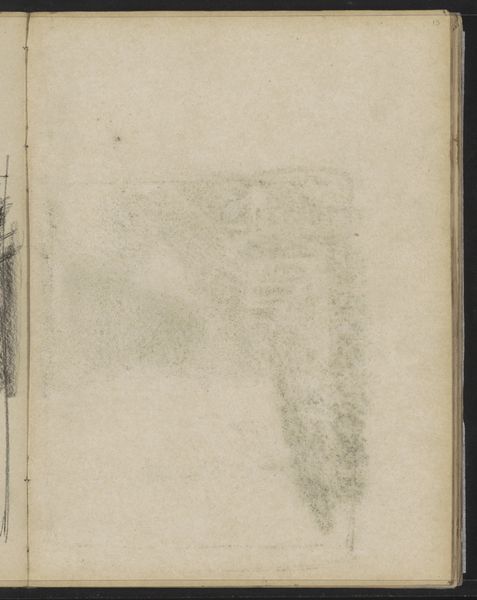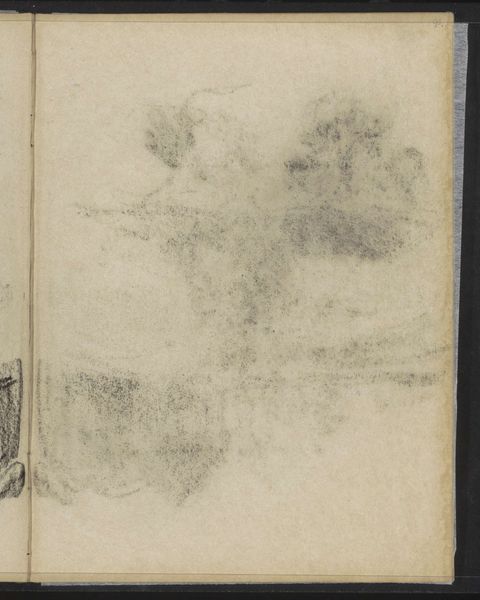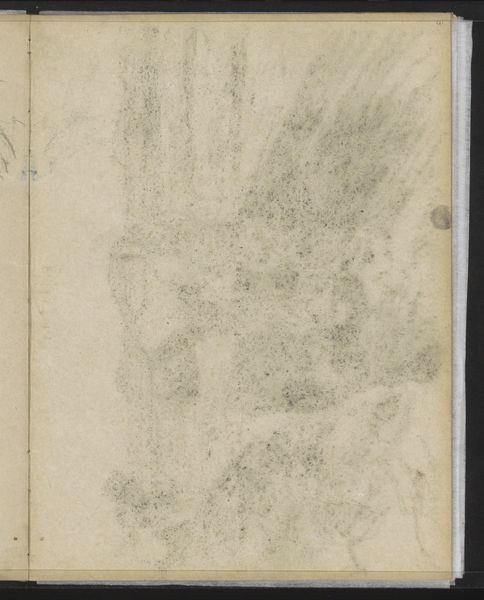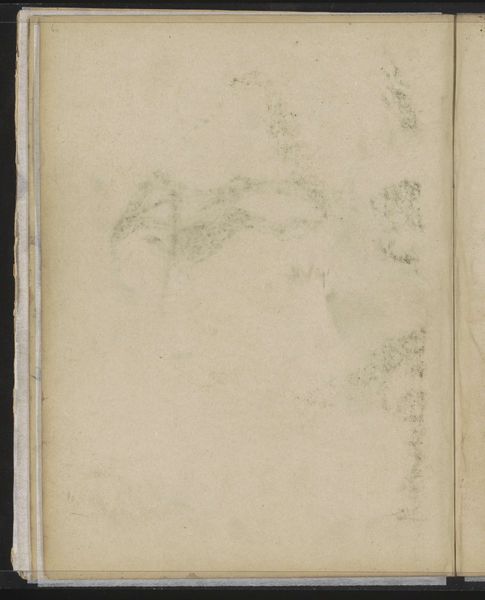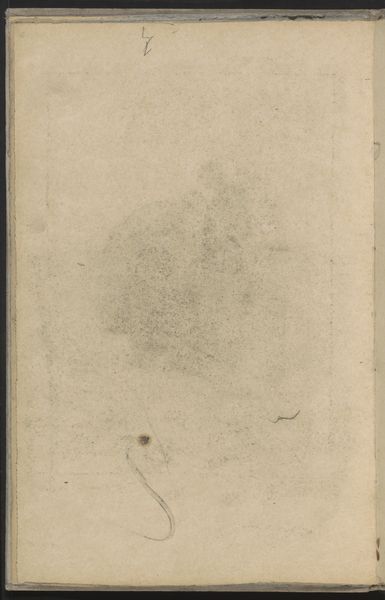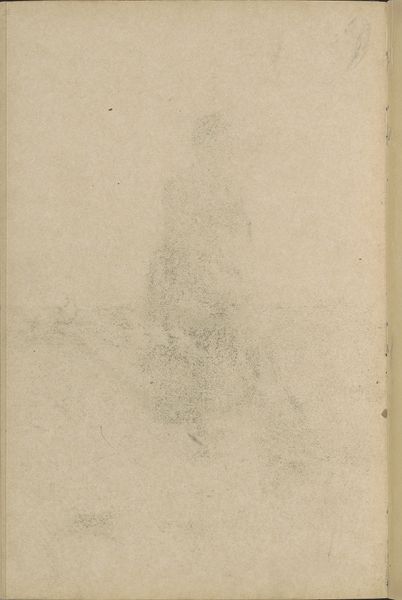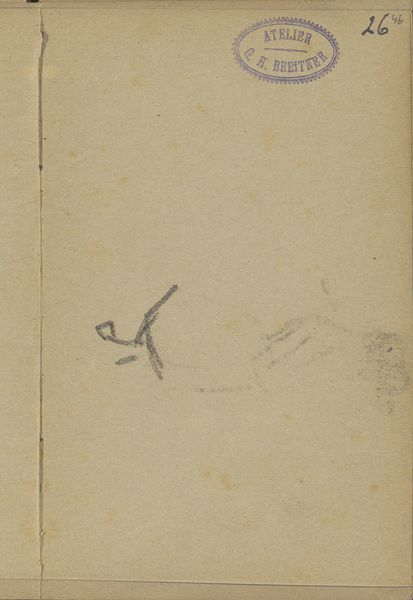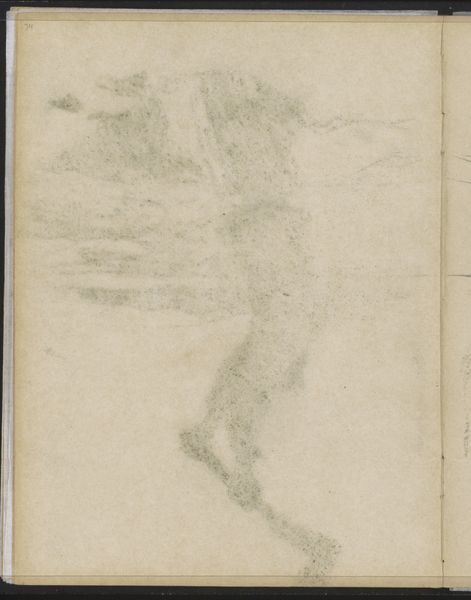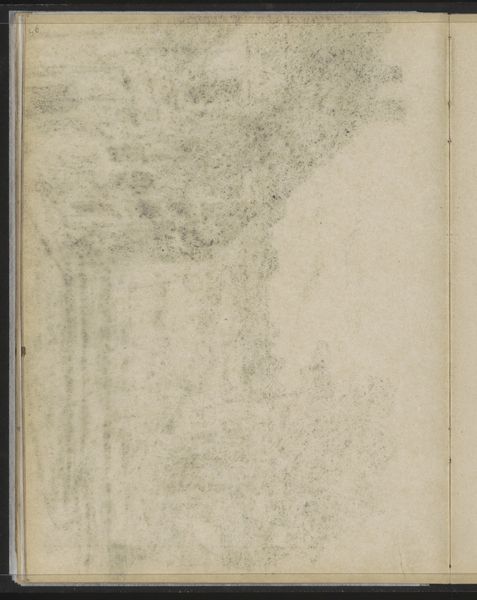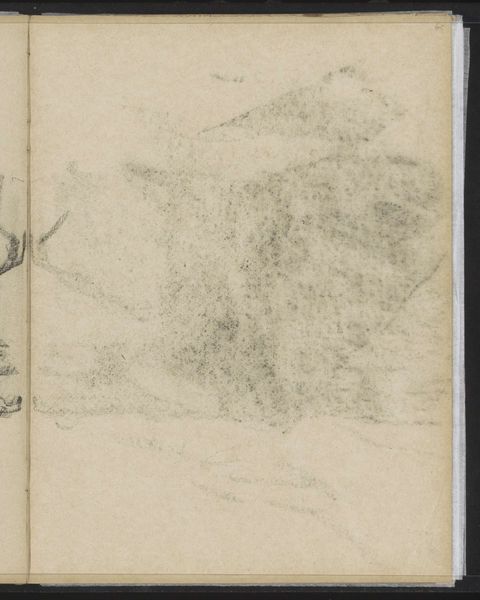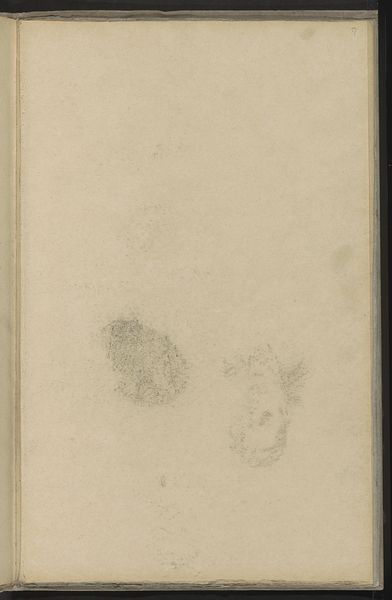
drawing, paper, pencil
#
drawing
#
impressionism
#
landscape
#
paper
#
pencil
#
line
Copyright: Rijks Museum: Open Domain
Curator: My first thought is melancholy, almost ghostly. There’s a faded quality to the image. Editor: That's interesting, given its context. This is “Abklatsch van de krijttekening op pagina 20,” or Transfer of a Chalk Drawing on Page 20, by Willem Witsen. It dates from around 1884 to 1891, and it is housed right here in the Rijksmuseum. Curator: "Transfer"—so this isn't the original drawing itself? Knowing that transforms my perception. Now I’m thinking about process, about reproduction. What paper was used? What kind of pencil, and what kind of pressure, would have been necessary for such a faint image? Editor: Those are great questions. It challenges the traditional idea of the artist's "hand," doesn’t it? Witsen’s drawing style, leaning towards Impressionism, positions this as part of a broader shift away from realism towards capturing fleeting moments, but in service of capturing that fleeting moment did he transfer the work? It forces us to confront the limitations of even a pencil as a tool. And if we are asking how, then we should ask why he felt the need to do a transfer instead of working on the spot or finishing a piece later on. Curator: Exactly! The "why" gets me thinking about the market, perhaps? Was this meant to be a study, a reference for larger, saleable pieces? Or maybe something about his artistic circle at the time pushed this medium, and technique, into fashion? What we have to consider too, looking closely, is it does appear that the paper he chose wasn't the best since some areas seem faded as if it was rubbing off. Editor: Perhaps there was the political instability of the time, making getting your hands on supplies hard, let alone using the most pristine material in the perfect conditions. And then it ends up housed in the Rijksmuseum decades later—how did it get here, and what other pieces might have influenced Witsen and even this drawing to arrive here to begin with. These drawings tell a whole other kind of story beyond just landscapes, lines and impressions. Curator: I agree. What began as an image suggesting solitude, or even a lack of clarity, becomes an illustration of social conditions of production and the limits of creation itself. Editor: Absolutely. A ghost of a drawing becomes a powerful reminder of the forces shaping artistic expression.
Comments
No comments
Be the first to comment and join the conversation on the ultimate creative platform.

